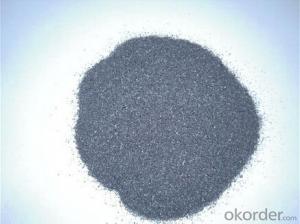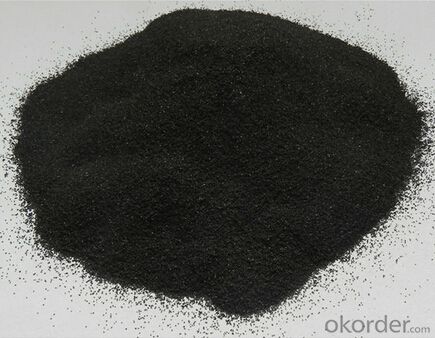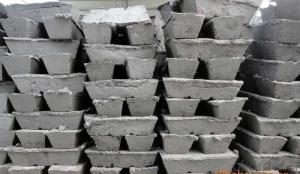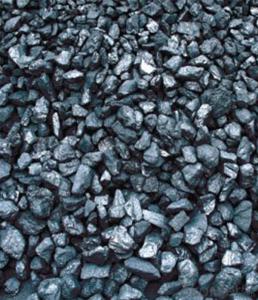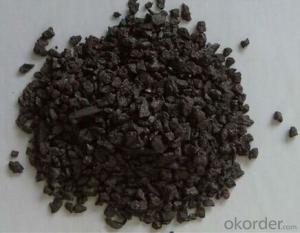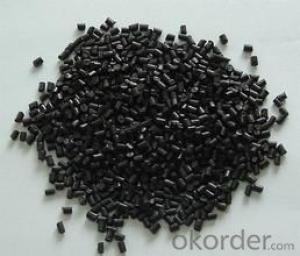Recarburizer 93% 94% Calcined anthracite 95% Carbon additives for Water purify
- Loading Port:
- Dalian
- Payment Terms:
- TT OR LC
- Min Order Qty:
- 10 m.t
- Supply Capability:
- 500000 m.t/month
OKorder Service Pledge
OKorder Financial Service
You Might Also Like
Specification:
Low Sulphur Calcined Petroleum Coke/Calcined Anthracite /CPC
We can manufacture the high quality product according to customers' requirements or drawings
Advantage:
- Reduce energy consumption
- Reduce recarburizer consumption
- Reduce scrap rate
- Reduce tap to tap time
- Reduce scrap rate
We can offer carburant in differnt types,whenever you need,just feel free to contact us
Data Sheet:
NO. | Fixed Carbon | Sulphur | Moisture | Volatile | Graininess |
>= | <= | <= | <= | Granularity distribution 90% | |
Oz1011 | 98.50% | 0.05% | 0.50% | 0.50% | 1-5mm |
Oz1012 | 98.50% | 0.50% | 0.50% | 0.80% | 1-5mm |
Oz1013 | 95.00% | 0.30% | 0.26% | 1.14% | 1-4mm |
Oz1014 | 90.00% | 0.30% | 0.30% | 0.90% | 1-5mm |
Oz1015 | 80.00% | 0.20% | 1.30% | 3.50% | 1-5mm
|
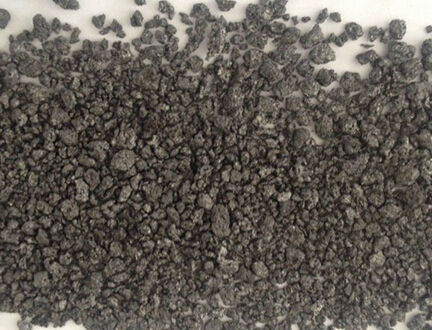

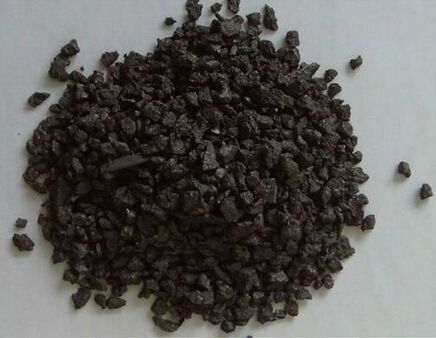
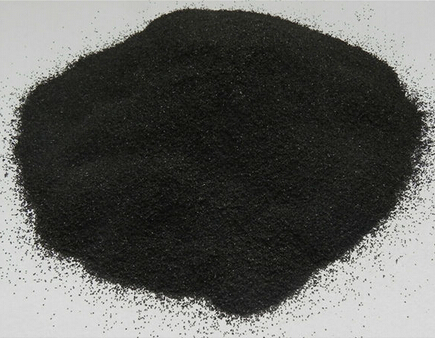
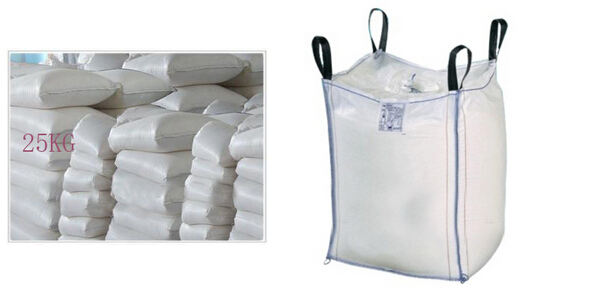
- Q: How does carbon affect the taste of food and beverages?
- The taste of food and beverages can be significantly altered by carbon, which can come in the form of activated charcoal or carbonation. Activated charcoal is known for its ability to absorb impurities and toxins, making it a popular ingredient in various food and drink products. When added to food and beverages, activated charcoal can eliminate unpleasant smells and tastes, resulting in a cleaner and more enjoyable flavor. Carbonation, on the other hand, is widely used in beverages to create a fizzy sensation and enhance the overall sensory experience. By dissolving carbon dioxide gas in liquids under pressure, bubbles are formed when the pressure is released, giving the drink a refreshing and effervescent quality. This carbonation effect can impart a tangy or slightly acidic taste to the beverage, which is often considered pleasant and invigorating. Furthermore, carbonation can also impact the taste of food. For instance, the carbonation found in beer or sparkling wine can help balance the richness of certain dishes, adding a refreshing element and providing a cleanse for the palate. Carbonation can also be incorporated into certain foods, such as bread or pastry dough, to aid in rising and create a lighter texture. It is worth noting that the impact of carbon on the taste of food and beverages can vary depending on the specific application and concentration used. Additionally, the preference for carbonated or charcoal-free options is subjective, as some individuals may prefer non-carbonated alternatives. Ultimately, the use of carbon in culinary applications offers a multitude of possibilities for enhancing taste and providing unique sensory experiences.
- Q: What are the impacts of carbon emissions on coral reefs?
- Coral reefs are significantly affected by carbon emissions, with one of the most notable consequences being ocean acidification. This occurs when excess carbon dioxide (CO2) from the atmosphere is absorbed, causing the ocean to become more acidic. As a result, coral reefs struggle to build and maintain their calcium carbonate skeletons, which are crucial for their structure and survival. Consequently, their growth rates decrease, and their resilience weakens, making them more susceptible to damage from storms, disease, and other stressors. Moreover, the increasing ocean temperatures caused by carbon emissions have led to widespread events of coral bleaching. When corals are exposed to prolonged high temperatures, they expel the symbiotic algae (zooxanthellae) that live within their tissues. These algae provide essential nutrients and vibrant colors to the corals. Without them, corals become pale or completely white, a phenomenon known as bleaching. While corals can recover if the stressors decrease, severe or prolonged bleaching can result in coral death and the subsequent degradation of the reef ecosystem. Additionally, carbon emissions contribute to the intensification of storms and other extreme weather events, posing a direct threat to coral reefs. Stronger storms physically damage the reefs, breaking their fragile structures and reducing their resilience. Moreover, the sediment runoff from land, often exacerbated by storms, smothers corals and hinders their ability to feed and grow. The impacts of carbon emissions on coral reefs are not only detrimental to the diverse marine ecosystems but also to the millions of people who rely on them for food, income, and coastal protection. Coral reefs support a wide range of marine life, provide livelihoods for many communities through fishing and tourism, and act as natural barriers against storm surge and coastal erosion. The degradation of coral reefs due to carbon emissions jeopardizes the livelihoods and well-being of these communities, as well as the overall health and biodiversity of our oceans. To address these impacts, it is crucial to reduce carbon emissions by transitioning to cleaner, renewable energy sources, promoting sustainable practices on land to minimize runoff and pollution, and implementing effective management and conservation measures to protect and restore coral reef ecosystems.
- Q: How do plants and trees absorb carbon dioxide?
- Plants and trees absorb carbon dioxide through a process called photosynthesis. Photosynthesis is the process by which plants convert sunlight, water, and carbon dioxide into glucose (sugar) and oxygen. The process takes place in the chloroplasts, which are specialized structures within the plant cells. During photosynthesis, plants absorb carbon dioxide from the atmosphere through tiny pores on their leaves called stomata. The carbon dioxide enters the plant's cells and travels to the chloroplasts. Inside the chloroplasts, energy from sunlight is used to convert the carbon dioxide and water into glucose and oxygen. The glucose produced through photosynthesis is used by the plant as a source of energy for growth, reproduction, and other metabolic activities. Some of the glucose is stored in the plant as starch, while the rest is used to produce other essential compounds. The oxygen produced during photosynthesis is released back into the atmosphere through the stomata. This oxygen is vital for the survival of animals, including humans, as it is necessary for respiration. Overall, plants and trees play a crucial role in absorbing carbon dioxide from the atmosphere through photosynthesis. They act as natural carbon sinks, helping to regulate the levels of this greenhouse gas and mitigate the effects of climate change.
- Q: What's the difference between blue and red Panasonic batteries (carbon)?
- Blue is leak, proof, general, Purpose, general use battery (leak proof)Red is the long life long life battery (suitable for watches and clocks and other small power appliances)And heavy duty green seems to be good for high power appliances, such as toy cars
- Q: What is the difference between soil organic matter and soil organic carbon?
- Organic matter is organic matter, but a large part of which is composed of carbon, but carbon content of different organic matter is different, the conversion coefficient is 1.724, most of the organic matter and organic carbon conversion of a mean value is the value.
- Q: I bought a grill myself and went to barbecue with my friends the day after tomorrow, but I can't ignite the carbon. What should I do?
- Is it barbecue in the field? If so, there are many ways to ignite carbon in the wild.The simplest, affordable way is to pile up the fire, and then use the charcoal on it, charcoal will be used after burning.At home, it is placed directly on the gas range, ignited.Charcoal direct ignition is not convenient, it is best to use other things as medium ignition.Be careful when you're in the barbecue. Watch out for the fire.
- Q: Paint paint fluorocarbon paint which expensive?
- Teflon (Tie Fulong) coating is a kind of high performance coating is the one and only, with heat resistance, chemical inertness and excellent insulation stability and low friction, the comprehensive advantages with other coatings can not compete, the flexibility makes it can be used in almost all the shape and size of the products.Fluorocarbon paint is a kind of coating with fluorine resin as its main film forming material. It is also called fluorocarbon paint, fluorine coating and fluorine resin coating. In a variety of coating, fluorocarbon resin coatings due to the introduction of fluorine element electronegativity, fluorocarbon bond energy, has the good performance. Weather resistance, heat resistance, low temperature resistance, chemical resistance, but also has a unique non sticky and low friction.
- Q: DNF new advanced furnace rock carbon reinforcement +10 50 powder weapons, the upper 11 probability of success is how much, how many advanced furnace rock carbon?
- Specifically, for a random item / skill, there is an initial probability, called C. (for each item / skills are different) for example, roaming learned a 10 crit, so he first attack crit rate is C, if not crit, then the next attack, the system will take the chance to crit increased to 2C, if not a crit, then to improve to 3C... Until a crit, and start all over. The next chance of crit returns to the very beginning of C. (obviously, if has not crit, so after a certain number of attacks on X X*C>1, then this will surely be a crit) this is our game in random, many people may have noticed that some of our props inside the game, such as Tara jewelry sets BUFF probability is 1%, but in fact the BUFF probability is much more than 1%. Many props are like this, such as the title of death, robot necklace...... The odds of a low probability are high. The reason is that everything in the game is pseudo random, and our random values are always superimposed, that is to say, definitely. Strengthening equipment is the reverse, for the first time is 100%, and then multiplied by a C, has been multiplied to the probability of infinity approaching 0...... So the cushion works in theory. Believe to see, understand the players have already understood, want to play high carbon to the biggest use, depend on mat. After understanding this point of view we can count the cost of the 20 high carbon equipment 8 yuan then taking yxb:rmb1:20 as an example, if more than 160W will use cost-effective equipment than carbon somehow expensive ~ here is to provide you a way
- Q: The relative molecular mass was between 120-150. The testThe organic matter M, which contains only carbon, hydrogen and oxygen, was measured by mass spectrometer. The relative molecular mass was between 120-150. The mass fraction of oxygen element measured by experiment is 48.48%, the ratio of hydrocarbon to mass is 15:2, and only COOH in M molecule is measured by infrared spectrometer. Then the M formula is?
- The mass fraction of oxygen element is 48.48%, the mass fraction of hydrocarbon is =51.52%, and the mass ratio is 15:2. The mass fraction of carbon is =51.52%x15/ (15+2) =45.46%, and the mass fraction of hydrogen is =51.52%x2/ (15+2) =6.06%The atomic number of C, H and O is higher than that of =45.46%/12:6.06%/1:48.48%/16=3.79:6.06:3.03Molecules contain only COOH, and oxygen atoms must be even numbers.Therefore, the number of atoms in C, H and O can be reduced to =5:8:4, which may be C5H8O4, and the relative molecular weight is 132
- Q: How is carbon used in the production of paints?
- Paint production utilizes carbon in multiple ways. An important application of carbon in paint production involves its use as a pigment. Carbon black, a type of elemental carbon, is commonly employed as a black pigment in various paint types. It imparts a deep and intense black hue, along with exceptional light absorption characteristics, making it ideal for creating dark tones in paints. Additionally, carbon plays a role in the formulation of specific paint types, such as carbon-based coatings. These coatings find application in scenarios demanding resistance against heat, chemicals, and corrosion. Industries like automotive, aerospace, and marine frequently employ carbon-based coatings, where durability and protection are paramount. These coatings can be applied to diverse surfaces, providing a high level of protection and extending the lifespan of the painted object. Furthermore, carbon serves as a filler material in certain paint varieties. Carbon fillers are added to enhance the mechanical properties of the paint, including strength, hardness, and resistance to wear and tear. They also contribute to the overall performance of the paint, augmenting its durability and longevity. In conclusion, carbon is an indispensable component in paint manufacturing, fulfilling roles as a pigment, a constituent of coatings, and a filler material. Its versatile properties make it a valuable addition to various paint formulations, enhancing the aesthetic appeal, durability, and performance of the final product.
Send your message to us
Recarburizer 93% 94% Calcined anthracite 95% Carbon additives for Water purify
- Loading Port:
- Dalian
- Payment Terms:
- TT OR LC
- Min Order Qty:
- 10 m.t
- Supply Capability:
- 500000 m.t/month
OKorder Service Pledge
OKorder Financial Service
Similar products
Hot products
Hot Searches
